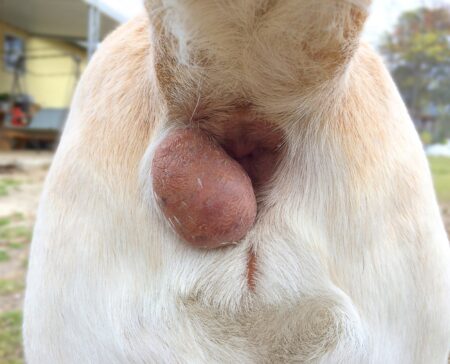Sudden Lumps on Dog Under Skin: Causes And Treatment
Having a sudden lump appear on or under the skin of a dog can be worrisome. Unfortunately, there are many causes for these lumps, some of which can indicate serious underlying issues. Some lumps are normal and relatively harmless, while others can signify a more serious underlying health problem. It is important to establish the cause of any sudden lump that appears on or under a dog’s skin. With the right diagnosis and treatment, the lump can be addressed and your pet’s health can be restored.
This article will discuss the different possible causes of sudden lumps on or under a dog’s skin and the various treatments available to address the issue. With an understanding of the underlying causes and available treatments, pet owners can better handle instances of sudden lumps on a dog.
Sudden Lumps on Dog Under Skin: Causes And Treatment
Sudden lumps on a dog’s underskin can be caused by a variety of issues, such as skin infection, allergies, a foreign body, or tumors. These lumps can appear as firm or soft bumps under the skin’s surface and may be associated with pain or a change in the dog’s behavior.
A veterinarian should be consulted to properly diagnose the cause of the lump, its size, and any necessary treatment. Treatment may include anti-inflammatory and/or antibiotic therapy, minor surgical removal of the lump, or other treatments depending on the cause of the lump. In some cases, regular surveillance may be required to monitor the lump and the health of the pet.
Types of Skin Lumps and Bumps on Dogs
- Warts: Warts are raised bumps caused by the canine papillomavirus. They typically appear on the mouth, lips, or around the eyes, nose, and feet, and are generally painless. They can range in size from a few millimeters to several centimeters in diameter and can be smooth or rough. Warts usually go away on their own but can be removed surgically or treated with topical ointments.
- Lipomas: Lipomas are slow-growing, soft, fatty tumors that typically appear on the head, neck, trunk, or legs. While they are usually benign, some may be associated with certain cancers. Lipomas can range in size from a few millimeters to several centimeters in diameter. If left untreated, a lipoma may continue to grow and may require surgical removal.
- Cysts: Cysts are sac-like structures that are filled with either air, fluid, or material that can range in size from a few millimeters to several centimeters in diameter. They can develop in the skin, and various breeds of dogs have a predisposition to certain kinds of cysts. They are usually benign but can become infected or grow to an uncomfortable size. If this is the case, they can be treated with medication or surgically removed.
- Seborrhea: Seborrhea is a common skin condition that presents with scaling and crusting of the skin. It is usually caused by a yeast or bacterial infection and can be treated with topical medications or shampoos. Seborrhea can lead to the production of greasy, waxy, or thickened skin that may form lumps or bumps.
Lump Under Dog Skin That Moves
This could be a lipoma, which is a benign, encapsulated collection of fatty tissue. Lipomas are soft, movable lumps that lie just under the skin. They can be present anywhere on the body, but commonly occur on the neck, back, and shoulders. Lipomas are usually painless and benign and often require no treatment.
Pea-Sized Lump Under Dog Skin
If you find a pea-sized lump under your dog’s skin, it’s important to have it checked by a veterinarian as soon as possible. Skin lumps can be caused by many things, including infection, tumors, cysts, or other growths. Depending on the cause, treatment may be necessary. Your vet will be able to diagnose the lump and recommend the best course of action.
My Dog Has Bumps Under Her Fur
If you are concerned about your dog’s bumps, you should bring her to the vet for an examination. They will be able to look at your dog determine what is causing the bumps and provide the appropriate treatment. While bumps under the fur can indicate something minor, they can also be an indication of something more serious, such as a skin infection, an allergic reaction, or even a tumor. The only way to be sure is to have the vet examine your dog and provide a diagnosis.
SEE ALSO: Maggots in Dog Poop: What Does It Mean?
Large Fluid-Filled Lump on Dog
If your dog has a large fluid-filled lump, it is important to have it examined by a veterinarian. The lump could be a benign cyst or abscess, but it could also be more serious such as a tumor or infection. Depending on the size, location, and other characteristics, your veterinarian might recommend further testing or treatment. Advanced diagnostic testing may include an ultrasound or biopsy. Treatment may involve draining, medications, or possibly surgery. Be sure to contact your veterinarian as soon as possible for proper diagnosis and treatment.
Causes of Lumps Under Dog Skin
- Lipomas: Lipomas appear most commonly in middle-aged and older dogs, appearing as soft, movable lumps under the skin. They are generally benign fatty tumors that form due to an underlying metabolic disorder and can be left alone unless they cause pain or interfere with a dog’s daily activities.
- Cysts: Cysts are lumps that form due to clogged oil or sweat glands. They usually contain a clear fluid and can sometimes grow to become large and painful for a dog. These lumps are most likely benign but can be examined and treated by a veterinarian if necessary.
- Histiocytomas: Histiocytomas are commonly found in young dogs, appearing as red, circular bumps. They are benign tumors that develop from the immune system’s mast cells and typically require no treatment.
- Skin Cancer: While rare, skin cancer is an important cause of lumps in dogs, with more common forms being mast cell tumors and malignant melanomas. Any lump that is rapidly growing, hard, or discolored should be seen by a veterinarian for diagnosis and treatment.
- Abscesses: Abscesses are caused by bacterial infections and appear as swollen, firm lumps filled with pus. They may be accompanied by a foul odor and other signs of infection. Prompt treatment is necessary to prevent the infection from spreading.
Diagnosis of Lumps Under Dog Skin
If your dog has a lump under their skin, it is important to have it examined by a veterinarian to determine the cause. Depending on the lump’s size, shape, and location, your vet may be able to diagnose it through a physical examination. In some cases, they may recommend additional testing, such as an ultrasound, X-ray, or biopsy. These tests can help to determine whether the lump is benign or malignant, as well as whether any treatment is necessary. Skin tumors can be either cancerous or non-cancerous (benign).
When Should You Worry About a Dog’s Skin Bump?
Any time you notice a skin bump or lump on your dog, it’s best to check it out with your veterinarian. Any lumps that are new and growing, are hard, painful, have an irregular shape, or feel particularly warm should be examined right away. It’s also wise to get any skin growths checked that bleed, ooze, or seem to bother your dog. Early intervention and diagnosis are important to addressing any possible health issues in dogs.
What to Do If You Find a Lump or Bump on Your Dog
- Stay Calm. It is normal and natural for dogs to have bumps and lumps which may be something minor, but even so, it is important to remain calm and not panic.
- Check the area. Take note of the size, shape, texture, location, and color of the lump.
- Contact your veterinarian. Make an appointment with your veterinarian to have the lump or bump evaluated.
- Follow your vet’s instructions. Depending on the type of lump/bump, your vet may recommend a treatment plan which could include antibiotics, draining the lump, or having it surgically removed. Follow your vet’s instructions carefully.
- Monitor the lump/bump. After treatment, monitor the lump/bump for any changes and contact your vet if there is any alteration in size or shape.
Sudden Lumps on Dog Under Skin Treatment
If your dog has developed sudden bumps on its skin, or beneath its skin, it is important to have the condition evaluated by a veterinarian. Depending on the type of lump, there can be a variety of treatments. In some cases, the lump may need to be surgically removed and biopsied in order to determine the underlying cause. In other cases, a topical ointment or oral medication may be prescribed to help reduce appropriate swelling, inflammation, and infection. If the lump is due to a dietary allergy, your veterinarian may recommend a special diet to help alleviate the issue. Additionally, in some cases, a veterinarian may suggest an anti-inflammatory medication as well.
SEE ALSO: Lyme Disease Bright Red Circle on Dog’s Belly: Causes And Treatment
FAQs
Q. Why does my dog have a lump all of a sudden?
A. It is impossible to know why your dog has a lump all of a sudden without further medical evaluation. It could represent anything from a benign cyst or fatty deposit to a tumor or infection.
Q. Can dog lumps go away on their own?
A. Yes, some lumps on dogs can go away on their own. However, others will require medical attention. Therefore, it is important to seek veterinary advice when noticing any changes to your dog’s body.
Q. How do you get rid of lumps on a dog?
A. Depending on the type and severity of the lump, treatment options may include surgical removal, topical or oral medications, or minor procedures.
Q. What if my dog has a lump that appeared overnight?
A. If your dog has a lump that appeared overnight, it is important to take him to the vet for a proper diagnosis. The vet can help determine the cause of the lump and provide the best treatment options.
Conclusion
In conclusion, sudden lumps on dogs under the skin can be caused by a variety of things, including cysts, tumors, and abscesses. It is important to have a veterinarian diagnose the cause and recommend treatment as soon as possible. Treatment may involve medications, minor surgeries, or lifestyle changes. Despite the potential for serious illnesses, the majority of lumps on dogs are benign and can be treated with care and attention.


